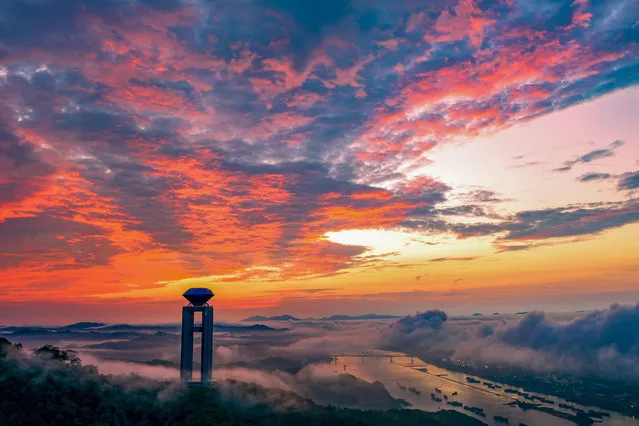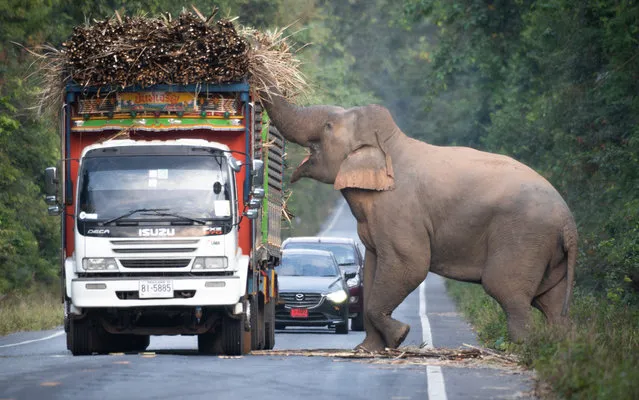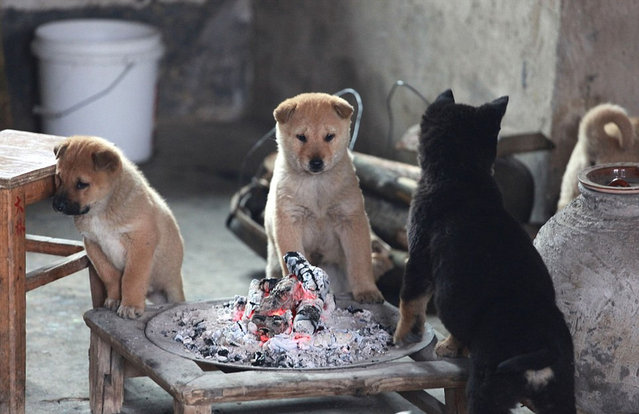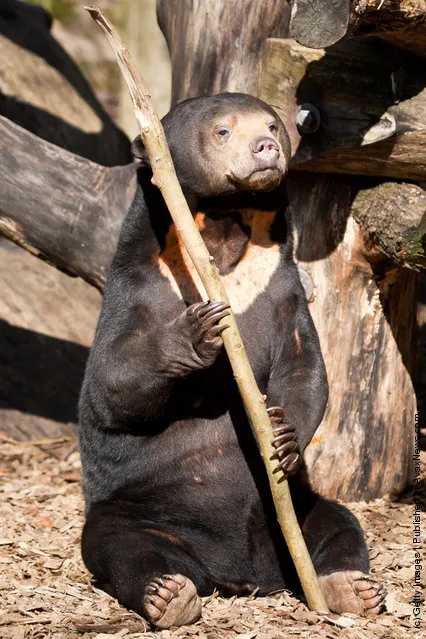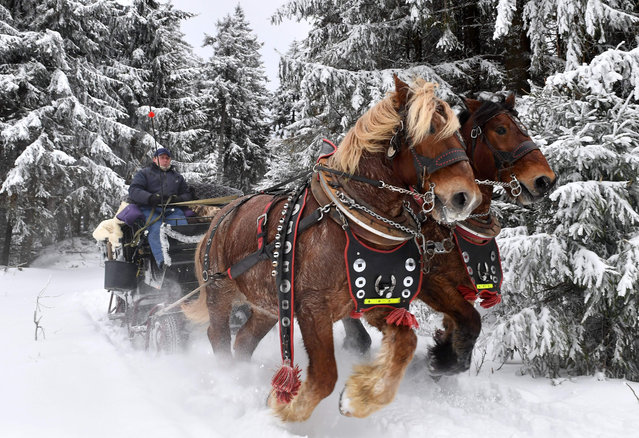
A horse- drawn carriage rides along the race course through the Thuringian Forest in Oberhof, Germany, 05 January 2017. Winter found its way to Saxony, Saxony- Anhalt, and Thuringia. In some regions it can get as low as negative 20 degrees overnight. (Photo by Martin Schutt/Zentralbild/DPA)
06 Jan 2017 14:17:00,post received
0 comments

